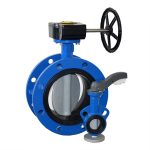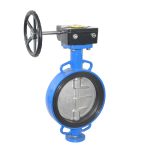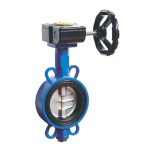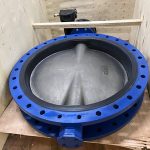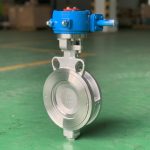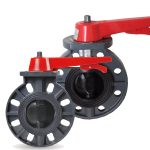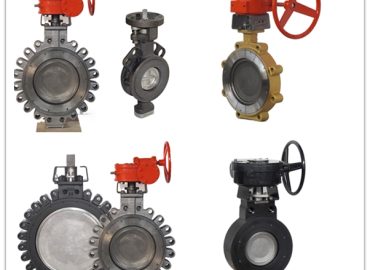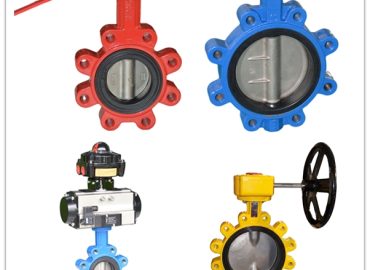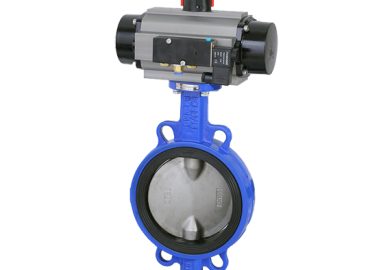Butterfly valves are critical components in fluid management systems, regulating the flow of gases, liquids, and slurries. These valves are subject to wear and tear, prompting the need for regular maintenance and repair to maximize their lifespan and optimize their performance. For butterfly valve repair, it is critical to have the right tools and materials that enable efficient valve repair, minimizing valve downtime and maintaining an efficient operation. In this blog post, we will outline the key tools and materials necessary for butterfly valve repair and provide practical guidance for effective butterfly valve overhaul procedures.
Introduction
When it comes to butterfly valve repair, the availability of the right tools and materials is of paramount importance. For basic butterfly valve maintenance and repair, technicians will need screwdrivers, wrenches, pliers, thread tape, and bolts and nuts. However, for more complicated repairs such as valve actuator repairs or resurfacing of parts, specialized tools such as gasket punches, valve repair kits, valve lapping kits, and resurfacing tools may be necessary. In addition to tools, materials such as replacement parts like seals and gaskets, discs and plates, bushings, bearings, valve stem, and seats, as well as cleaning and lubrication materials, such as solvents and lubricants, may be necessary to achieve optimal results. Therefore, having the right tools and materials is crucial for efficient and effective butterfly valve repair.
Importance of Butterfly Valve Repair
Butterfly valve play a critical role in regulating fluid flow and ensuring system safety in various industrial settings. Over time, these valves can experience wear and tear that may negatively impact their performance, leading to equipment downtime, decreased efficiency, and safety hazards. Repairing butterfly valves restores their performance, improves their reliability, and extends their lifespan while reducing the need for future repairs and equipment replacement costs. Routine maintenance and repair of butterfly valves not only ensure optimal valve performance but also enhance system safety, maximizing operational uptime, and promoting cost savings by avoiding unexpected expenses related to valve failure. Overall, prioritizing butterfly valve repair improves overall system functionality and safety, increasing long-term profitability and contributing to a sustainable operation.
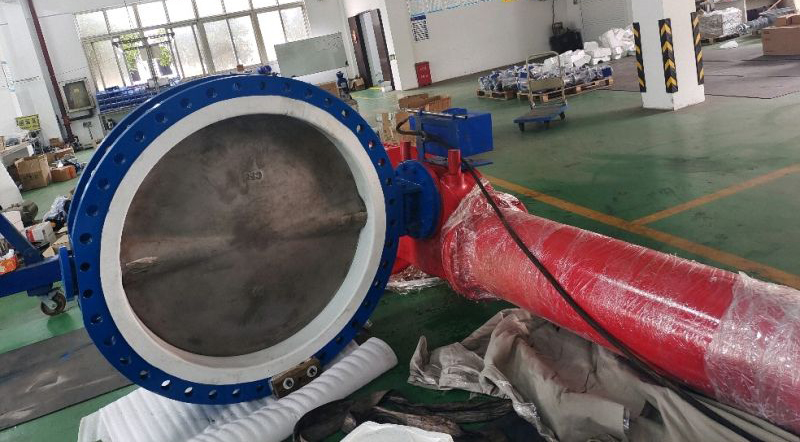
Why It Is Necessary To Have Proper Tools And Materials
Having proper tools and materials is essential for effective and efficient butterfly valve repair. Using incorrect or inadequate tools can cause damage to valve components or reduce repair quality, leading to reduced valve lifespan and system inefficiencies. Additionally, without the proper replacement parts, repairs may be delayed, causing prolonged valve downtime and increased maintenance costs. The use of incorrect cleaning and lubrication materials may also lead to valve damage or failure, necessitating further repairs or even valve replacement. These outcomes can be costly and time-consuming, leading to decreased productivity and lost revenue for businesses. Ultimately, investing in proper tools and materials for butterfly valve repair is a worthwhile investment, allowing businesses to prioritize efficient valve repair, avoid unnecessary maintenance costs and safeguard their equipment’s longevity, leading to optimal valve performance and system efficiency.
Tools Required For Butterfly Valve Repair
Butterfly valve repair requires various tools that are suited to different repair jobs. The basic tool kit should contain screwdrivers, wrenches, pliers, thread tape, bolts, and nuts. Alongside these, specialized tools are necessary, such as valve lapping kits, gasket punches, resurfacing tools, pneumatic tools, and valve repair kits. The valve actuator, which drives the valve disc rotation, is an essential tool that provides a mechanism for remote control of valve operation, and valve disc removal tools that facilitate easy removal of the circular disc for maintenance purposes. Other tools that may be necessary include torque wrenches, which provide accurate and adjustable torque values when tightening bolts and nuts, thereby ensuring that valves are optimally tightened. Properly sized and shaped scraper can also be useful when resurfacing the valve seat. Using specialized tools ensures optimal repair and maintenance of butterfly valves, reducing the risk of damage, unnecessary maintenance costs, and safety hazards.
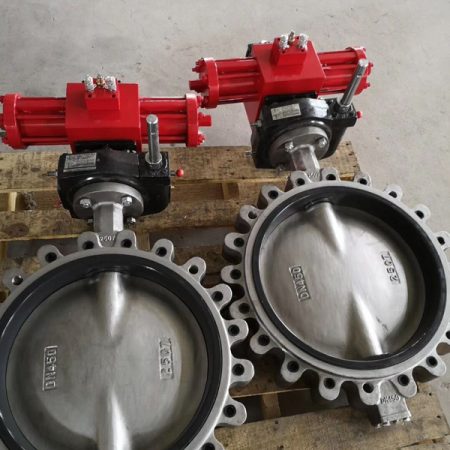
Valve Wrench
Valve wrenches are an essential tool for the repair and maintenance of butterfly valves. These wrenches come in various sizes and shapes, depending on the valve size and type. Valve wrenches provide effective gripping and leverage for removing butterfly valve handles, nuts, bolts, and other components. They provide a reliable locking mechanism that ensures the valve handle stays in place during valve repair. Valve wrenches also help maintain the correct force and torque when tightening and loosening the valve’s components, thus preventing damage to the valve or the valve operator. Investing in high-quality valve wrenches is critical for achieving optimal valve performance and ensuring safe valve operation. The valve wrench should be durable and made of high-quality materials to withstand high-intensity applications and withstand wear and tear.
Torque Wrench
A torque wrench is a specialized tool used to ensure that bolts and nuts are tightened to a specific torque value during butterfly valve repair. Tightening a bolt or nut beyond its recommended torque value can cause damage to the valve or its components, leading to reduced valve performance or failure. A torque wrench helps maintain the optimal force required for different components and ensures that all fasteners are tightened uniformly to prevent leaks and reduce the risk of equipment downtime. Torque wrenches come in various sizes and types, such as beam-type, click-type, and digital torque wrenches, each suited to specific torque settings and application types. When using torque wrenches, it is essential to follow the manufacturer’s instructions for the correct torque specifications and to use properly calibrated tools for accurate torque measurement. Ensuring accurate and uniform valve tightening is crucial for extending valve lifespan and optimizing system performance.
Butterfly Valve Repair Kit
A butterfly valve repair kit is a specialized toolkit containing various components required for butterfly valve repair. The kit often includes replacement parts like seals and gaskets, discs and plates, bushings, bearings, valve stem, seat, and other components that experience wear and tear over time. Moreover, it makes it easier to maintain and repair valves, minimizing equipment downtime and maximizing valve performance. Repair kits typically come in different sizes, depending on the valve’s size and type, making it easier to obtain the required repair components. Having a repair kit on hand can be especially useful for emergency repairs, reducing the time needed to source individual parts and minimizing valve downtime. Using a reliable and appropriate butterfly valve repair kit like the original manufacturer’s kit ensures optimal performance and efficiency of the repair process, reducing overall maintenance costs and increasing valve lifespan.
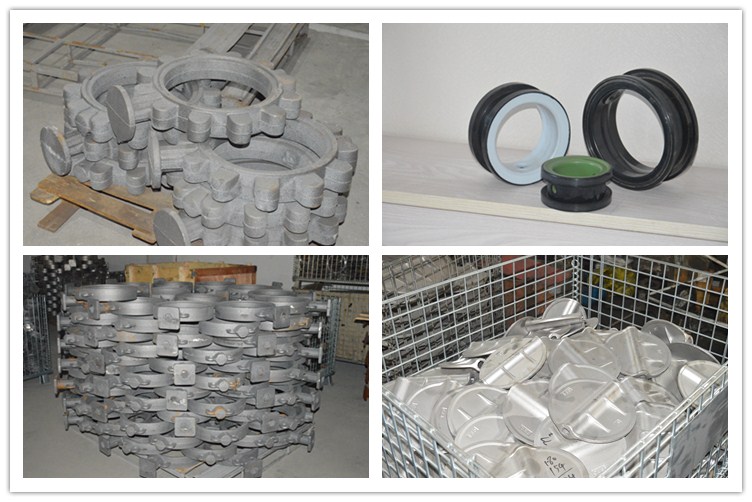
Sealing Components
Sealing components are critical parts of butterfly valves that prevent leaks and ensure optimal ball valve performance. These components include seals and gaskets, which are necessary to seal the valve’s disc against the valve seat. Seals come in various materials to withstand different temperatures, pressures, and chemicals. Gaskets are typically made of soft materials like cork, rubber, or silicone, which provide a cushioning effect and seal any gaps between valve components. The quality of seals and gaskets plays a significant role in the overall performance and longevity of butterfly valves. Over time, the seals and gaskets may become worn or damaged, leading to leaks or valve failure. As such, it is crucial to regularly inspect and replace these components as part of routine valve maintenance. Investing in high-quality seals and gaskets ensures optimal valve performance, preventing unnecessary downtime and maintenance costs.
Grease And Lubrication
Grease and lubrication are critical to maintaining optimal butterfly valve performance. Lubrication helps prevent friction, reducing wear and tear on valve components like the stem and disc, preventing rust and corrosion, and ensuring smooth operation. The type of lubrication used on a valve depends on factors like the fluid being regulated, temperature, and pressure. Grease is often used for butterfly valves, providing a range of benefits, including improved valve performance, lifespan, and ease of maintenance. Regular lubrication and greasing also help to ensure that valves continue to operate optimally, reducing the risk of valve wear and tear, leaks, and valve failure. As such, it is critical to choose the appropriate lubricant and carry out regular maintenance to prevent deterioration of valve components, maintaining optimal valve performance, thus maximizing operational uptime and reducing maintenance costs.

Materials Required For Butterfly Valve Repair
Various materials are necessary for effective butterfly valve repair. Replacement parts such as valve seals and gaskets, bushings, bearings, valve stems, discs, and plates should be readily available to minimize valve downtime. Using original manufacturer replacement parts is crucial to achieve optimal valve performance and durability. In addition to replacement parts, cleaning and lubrication materials such as solvents and lubricants are necessary to maintain the valve’s optimal performance. The use of appropriate cleaning agents is critical to prevent damage to the valve components, while lubrication materials help maintain a smooth operation of the valve and reduce friction. Proper maintenance of the valve’s external components such as the body, disc, actuator, and stem are crucial to ensure the valve works correctly. Regular inspection and cleaning of the valve’s body and disc will detect any abnormal buildup, surface cracks and prevent corrosion, and ensure that the valve’s external surfaces are free of corrosion and debris.
Replacement Parts
Replacement parts are essential for butterfly valve repair, ensuring optimal valve performance and preventing unnecessary valve downtime or damage. Different components such as valve seals and gaskets, bushings, bearings, valve stems, and discs experience wear and tear, and they may need to be replaced periodically for continued valve functionality. It is crucial to choose original equipment manufacturer(OEM) parts when replacing any components to ensure proper fit, optimal performance, and a prolonged equipment lifespan. OEM parts are specifically designed and tested for compatibility with the valve, eliminating the risk of installing substandard or incompatible parts. Using high-quality replacement parts improves valve reliability and minimizes future repair costs, ensuring efficient and effective operation of the valve system.
Gaskets And O-Rings
Gaskets and O-rings are critical components in butterfly valve repair-replacement projects. These sealing materials ensure that there are no leaks from the valve once it is installed as an appropriate connection mechanism. They are typically made from materials such as rubber and silicone, which are flexible and create a tight seal around the valve’s body and components. Gaskets and O-rings are necessary where flange interfaces are present, often providing a cushioning effect and preventing metal-to-metal contact that can cause damage to valve parts. Additionally, they can acquire damage or wear over time due to exposure to harsh environments, chemicals or other applications, and may require replacing to maintain the valve’s optimal performance. Ensuring high-quality replacements are available to prevent leaks and improper valve closure is essential for overall valve reliability and efficiency.
Cleaning Agents And Solvents
Cleaning agents and solvents play a critical role in butterfly valve repair and maintenance, ensuring the components are free of debris and contaminants that could affect their operation. Cleaning agents help remove contaminants, such as dirt, grime, and rust, that accumulate over time and can lead to a reduction in valve performance. Solvents are often used to clean valve components before applying lubrication or engaging in repairs, as they help dissolve oil, grease, and other organic components. The choice of cleaning agents and solvents depends on factors like valve size, type, material, temperature, and pressure to ensure compatibility with the valve and prevent damage. It is important to follow the manufacturer’s instructions when using cleaning agents and solvents to safeguard against chemical reactions, adverse effects on valve material, and environmental health and safety risks. Regular cleaning using appropriate cleaning agents and solvents is vital for prolonged valve lifespan, maintaining optimal valve performance, and reducing valve maintenance and repair costs.
Welding Materials (in some cases)
Welding materials may be necessary in some cases of butterfly valve repair, where valve components have suffered severe damage or wear and tear. Welding can be used to repair metal valve components or to reconstruct a new metal section, reattached to the valve body. Welding helps restore valve integrity and strength, preventing further damage or leaks. The choice of welding material is critical, and it should be compatible with the valve body and other components. Incompatible welding materials can cause excessive heat or corrosion, leading to further valve damage. Low-heat welding techniques such as TIG (Tungsten Inert Gas) or MIG (Metal Inert Gas) are often preferred, as they minimize heat damage to delicate components and produce high-quality welds. When welding is necessary, it is best to seek the services of qualified professionals to carry out the repair correctly and ensure optimal valve performance.
Safety Gear
Safety gear is of utmost importance while carrying out butterfly valve repair procedures, as valve maintenance and repair can be hazardous. Safety gear helps to reduce the risk of accidents, injuries, and exposure to harmful substances or chemicals. Common safety equipment used in butterfly valve repair includes gloves, safety glasses, hard hats, respirators, face shields, and protective clothing. Gloves are essential to protect the hands from cuts, punctures or exposure to grease or chemicals. Safety glasses, face shields, or respirators protect the eyes and lungs from exposure to debris, dust, chemicals, and harmful fumes. Hard hats protect the head from falling objects, and protective clothing shields the skin from corrosive substances, hot surfaces, and flames. It is crucial to ensure that all personnel involved in valve repair have access to adequate personal protective equipment and are trained on correct usage to minimize the risk of accidents in the workplace.
How to Perform a Butterfly Valve Repair
Performing a butterfly valve repair involves several steps to ensure optimal valve performance and longevity. The first step is to shut off any water, chemicals, or gas flow, isolate the valve from the system, and depressurize the area. Next, remove any external components, such as the actuator, handle, or end caps, to expose the internal valve components. Inspect the valve components and identify any signs of wear, leaks, or damage. Once all worn or damaged components have been identified, remove and replace them with OEM replacement components. Clean valve components thoroughly using appropriate cleaning agents and solvents to remove any debris, rust or contaminants that may affect the valve’s operation over time. Lubricate components with appropriate grease or lubrication materials to ensure smooth valve operation and reduce friction. Finally, reassemble all components (externally and internally) and test the valve to ensure it operates optimally before returning it to service. It is essential to follow the manufacturer’s instructions and seek professional assistance where necessary to perform a successful butterfly valve repair.

Inspection and Diagnosis
Inspection and diagnosis are critical steps in butterfly valve repair, as they help identify any issues, wear, or damage that may affect the valve’s optimal performance. During inspection, the valve’s external and internal components are examined to detect any signs of corrosion, erosion, leaks, or damage. Techniques such as ultrasonic testing, dye penetrant testing, and magnetic particle inspection may be used to provide more in-depth component analysis. After inspection, a diagnosis is made, which involves evaluating the nature and extent of the valve’s damaged or worn components. This stage helps determine the appropriate repair or replacement approach and the necessary tools, equipment, and materials required for the repair process. Proper inspection and diagnosis help to prevent future valve failures, extend valve life and increase valve reliability, ensuring optimal valve performance for extended periods.
Disassembly of the Valve Component
Disassembling butterfly valves components is a crucial step in butterfly valve repair to access internal valve components such as seals or gaskets, which may require replacement, repair or inspection. Before disassembling the valve, it is vital to depressurize, drain, and isolate the valve completely from the system or process. Next, remove any external components such as actuator or handle, and then unscrew any bolts, nuts or fasteners carefully attached to the components. Disassemble components carefully to avoid damaging any valve components or surfaces. Cleaning components using appropriate cleaning and solvent agents may help ease the disassembly process. It would be best to have an exploded parts diagram available to guide you in assembling the valve components after repair or replacement. Adequate knowledge of the valve type, size, and component layout is essential to avoid damaging the valve components, causing leaks, or compromising valve performance while disassembling the valve components.
Repair or Replacement of Defective Components
Repair or replacement of defective components is a critical aspect of butterfly valve repair. Once the valve has been disassembled and inspected, it is necessary to identify any components that may be worn, cracked or damaged and replace them with OEM parts. Defective components like valve seals, bushings, bearings, valve stems, and discs may result in the failure of the valve if not changed. Repairs such as grinding down or welding can repair small component damage, whereas more significant damage like a bent or broken valve stem may require replacement. Moreover, replacement may provide a better long-term solution, particularly when the valve has been in use for an extended period, and the original component is no longer able to guarantee optimal valve performance. Selecting genuine OEM parts is crucial to ensure proper fit, optimal valve performance, and extended valve life-span. Proper repair or replacement of defective components is critical for ensuring an efficient and reliable valve system.
Reassembly and Reinstallation
Reassembly and reinstallation of butterfly valves are critical steps in the repair process, following the replacement of defective components. Before assembly, ensure that all components have been thoroughly cleaned, and any corrosion or debris removed to guarantee optimal valve performance. Utilize exploded parts diagrams and assembly instructions to ensure that components have been placed appropriately, and that the assembly process follows the manufacturer’s specifications. Tighten bolts, nuts and fasteners carefully to avoid damage to valve components or surfaces. Lubricate any moving parts using manufacturer-recommended lubrication materials to ensure optimal valve performance and prevent friction. After reassembly, the valve should undergo a quality check to ensure proper valve function and pressure testing to ascertain optimum valve performance. Before reinstallation, ensure that the valve is compatible with the system and that it has been pressure and leak tested using manufacturer specifications. Proper reassembly and reinstallation procedures are vital for optimal valve function, extending valve life-span and ensuring safe and effective operational conditions.
Conclusion
Performing butterfly valve repairs can be a challenging task that requires specialized tools and materials. During butterfly valve repair, different valve components may need to be repaired, replaced, inspected, or adjusted. Therefore, the right equipment is necessary to ensure that the process goes smoothly and successfully.
One of the essential tools for butterfly valve repair is a valve removal tool. This tool is used to remove the valve from the pipeline, making it easier to carry out the repair process. Valve removal tools are beneficial when dealing with large, heavy valves or valves that are difficult to access.
Valve repair kits are also necessary to ensure that the valve parts are compatible with the valve model and function as expected. The kits contain everything required for valve repair or replacement, including seals, gaskets, and bearings.
Welding materials like Tungsten Inert Gas (TIG) or Metal Inert Gas (MIG) help restore valve integrity in the case of severe damage. Welding materials must be compatible with the valve body and other components to reduce potential heat damage or corrosion.
Cleaning agents and solvents are necessary for thoroughly cleaning valve components and dissolving harmful substances like chemicals or debris. Choosing the right cleaning agents and solvents ensures that they are compatible with the valve system and prevents potential damage.
Safety gear is also essential when performing butterfly valve repair. Safety gear helps reduce the risk of injury when exposed to harmful substances, chemicals, or accidents. Some of the crucial safety gear for butterfly valve repair include gloves, hard hats, safety glasses, respirators, face shields, and protective clothing.
In conclusion, performing butterfly valve repairs requires specialized equipment, tools, and materials to ensure that the process is successful. Choosing the right equipment helps prevent further damage, system downtime, and reduces repair costs. It is essential to follow the manufacturer’s specifications when repairing or replacing valve components and to seek professional assistance when necessary to perform successful butterfly valve repair. Choosing quality replacement parts and careful maintenance of the valve system can significantly impact the longevity and functionality of the valve system.
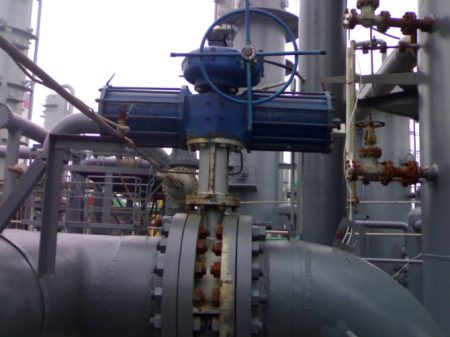
Importance of Proper Tooling and Materials
The importance of proper tooling and materials cannot be overstated when it comes to butterfly valve repair. The right tools and materials ensure that the repair process is done efficiently, effectively and safely, preventing further damage or accidents. Choosing the correct materials ensures compatibility with the valve body and other components, reducing potential issues like heat damage or corrosion. Likewise, choosing the right tools ensures ease of access, efficiency in the valve repair process, and reduces the potential for improper handling or accidental damage to valve components. Quality tooling and materials also ensure that the valve system functions correctly and for more extended periods, reducing maintenance costs and downtime. In summary, choosing the right tools and materials is crucial for a successful butterfly valve repair, protecting the valve system and guaranteeing optimal performance with minimal downtime.
Benefits of Proper Butterfly Valve Repair
Proper butterfly valve repair brings numerous benefits in terms of valve performance, safety, and longevity. Repairing the valve early on before it has failed can prevent revenue and production losses due to system downtime. Proper repair techniques, using the right tools and materials, can increase the valve’s lifespan, saving the cost of frequent maintenance and replacements. A functioning valve system promotes safety, ensuring that leaks and other issues that may have resulted in system failure and safety concern do not occur. Additionally, proper repair techniques ensure that the valve operates at the optimal level, preventing system overuse, and boosting production efficiency. By properly repairing the valve system, one saves on replacement costs, maintains a safer workplace environment, and reduces energy usage, translating into significant savings in the long run.



